This post was originally published in CarLustBlog.com on August 1, 2012. Minor editing and extra pic aside, it’s pretty much the same.
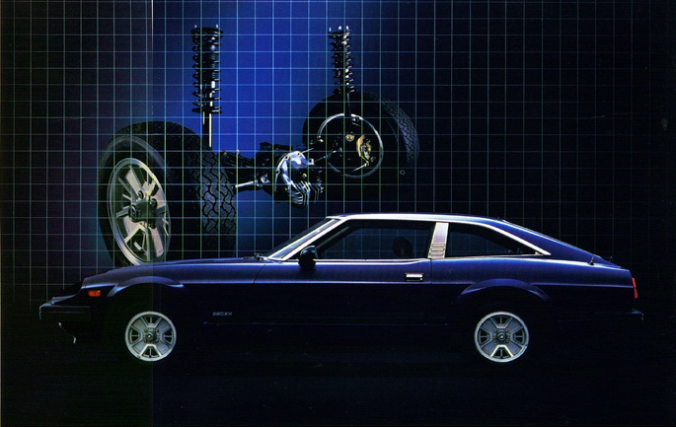 Once you get past the rear suspension and the 2+2 stigma, there’s a lot to like on the S130. Intrigued? Read on…
Once you get past the rear suspension and the 2+2 stigma, there’s a lot to like on the S130. Intrigued? Read on…
It’s not a pure sports car. We know. We always knew. We get it. Get over it.
Now that we got that out of the way…
When talking about 280ZXs, there’s no denying how AWESOME the commercials are (I’ll never look at Steve Wozniak the same way ever again). But reading up on the car showed polarizing views on them in just about every place Datsun/Nissan Z-dom is celebrated. Yet the important fact is that it did perform rather well against the competition. The Turbo versions were the fastest Japanese imports in the North-American market. Early 280ZX Turbos kicked their contemporary rivals’ butts, a list that include the Corvette, all the pony-cars, and the likes of the Porsche 924, Ferrari 308 and Jaguar XJ-S in non-cornering tests. Not bad for non-intercooled machinery, eh? Despite its luxury upbringing, the 280ZX didn’t weight that much compared to its previous iteration. While there were WAY more design submissions for what was to become chassis-code S130, the designers kept a lot of the styling cues of the original Z. At the very worst, its Ferrari Daytona-like looks (you can’t deny it, it’s there) lends itself well to replicas.
Yes, the 1982 facelifted non-2+2 models, with the introduction of the Turbo AND manual transmission combo (previously, only slushbox-equipped Turbos were available from the factory), power rack and pinion that replaced the recirculating-ball unit, plus revised rear suspension geometry, make ‘em the most desirable, performance-wise. But do the lack of these features on earlier cars make ‘em any less lust-worthy?
In a perfect world, the 280ZX would have remained true to its roots, but changing markets dictated otherwise. It did boggle me that Nissan went hunting in the “luxury-touring” market with the excuse that it’s in that category that they’ll find buyers. It wouldn’t surprise me that finding the more basic of trim packages today would prove to be more difficult for a car that was marketed in the GT category. Meanwhile, Mazda comes out with the RX-7, which became a hit on its own, taking the Z’s svelte-Japanese sports-car throne, and not unlikely, many of the Z’s fans. Despite the fact that the ZX did find sales, becoming the best-selling Z car to date at 421,922 units, the first-gen RX-7, which continued production two years after the S130’s model run ended, was over 471,000+ worldwide, even though, in their debut years, the ZX sold over 70,000 units vs. RX-7’s, 44,000. Oh well, it looks like there was a market for performance after all. Guess Nissan wanted the ZX wanted to be a “game-changer” like the 240Z was. This isn’t to steal the ZX’s thunder. It was definitely doing something right to sell all those units. Variety had something to do with it. Enter the 2+2.
Granted, I myself despised the 2+2s, but I began to warm up to them. If you were to spend dough on a sporty car that was more highway-cruiser than corner-carver, a 2+2 made sense and not just because of the extra room. The extended wheelbase (and extra 150lbs) gave a more planted feel to a car that already had good weight distribution. But who buys a sporty car for practical reasons? Well, plenty of people did. Looks-wise, you’ll find people that hate the 2+2’s design, but also find those that feel that the design is a step above previous 2+2 iterations, perhaps going as far as preferring the 2+2’s looks over the standard coupe (Nissan did a good job then, because they did focus on the 2+2’s design to look more integrated and less of an afterthought. This isn’t to bash on previous chassis-code S30-based 2+2s as they have a charm all of their own).
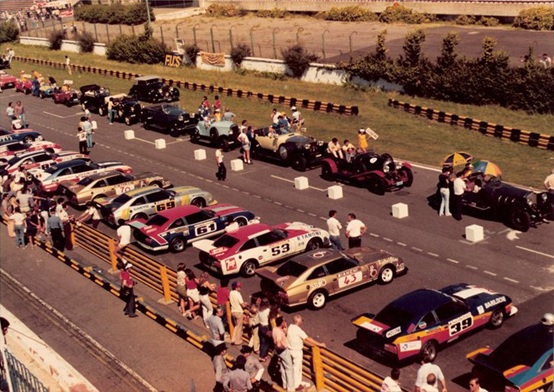
I suspect that its extra weight and buyers’ market are the reasons why I’ve never heard of people who bought 2+2s take ‘em to the track. Too bad. There is one notable exception though, found in Argentina, for at least a short period of time, the Club Argentino de Piotos. Think of an Argentinian version of International Race Of Champions (IROC) and you’d get the point. The pic above is just one of the many great gems found on the Club Datsun ZX de Argentina (Argentinian Datsun ZX club)’s Facebook page.
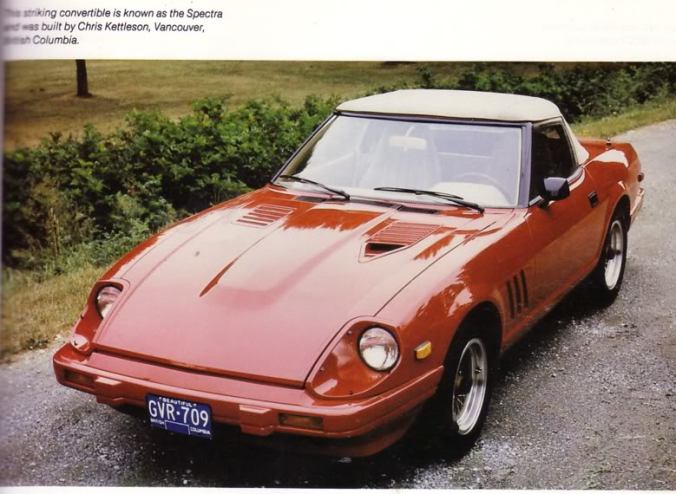 Like the S30 Z, there were independent conversion houses that supplied those with convertible conversions when T-tops didn’t cut it, like Belvedere Custom Auto, Inc.; Steas Industries Inc., among others; probably the more well-known one being the wild Spectra from Ketch Engineering, shown above.
Like the S30 Z, there were independent conversion houses that supplied those with convertible conversions when T-tops didn’t cut it, like Belvedere Custom Auto, Inc.; Steas Industries Inc., among others; probably the more well-known one being the wild Spectra from Ketch Engineering, shown above.
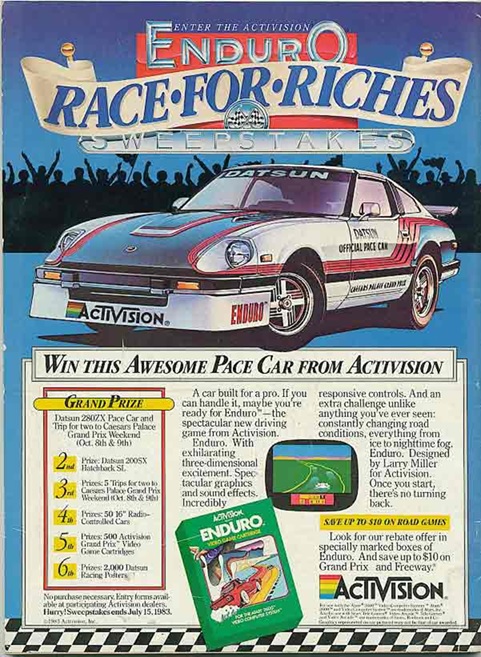
There were plenty of special editions straight from the factory though, like the “Black Gold” 10th Anniversary edition, and its lesser, and rarer “Black Red” counterpart (2500 vs 500, respectively). Those that desired factory performance could somewhat find relief in the 1979 Datsun 280ZXR, a homologation special with a Don Devendorf and John Knepp/Electramotive-designed functional whale tail and slick graphics. Wish the wheels were different, though. It was also featured in a couple of sweepstakes as the grand prize. If you were a videogame junkie, and did not drink Midori Melon Liqueur, the Activision Pace Car from their “Enduro Race-For-Riches Sweepstakes” was your dream ride then, complete with American-made Borg-Warner T5 5-speed to handle the turbocharged engine’s mighty 6.8 psi of boost, and the ZXR whale tail (yes, you could get all these goodies in regular ’82 ZX’s, the whale tail was available through Datsun Competition Parts Catalog, though it wasn’t a straight-up bolt-on)! Either that or you could just sit and watch these guys take advantage of the ZX’s aerodynamics, stronger unibody and wider track (for bigger tires! Yay!) at a local track:
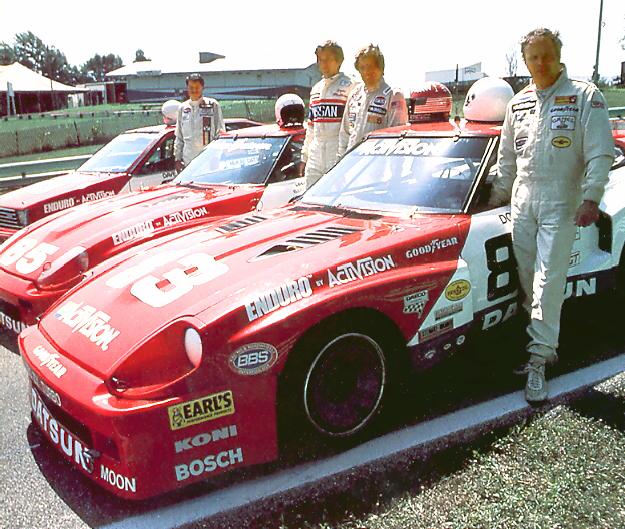
There was plenty of enthusiasm for the 280ZX in motorsport in the States. One inspired the mold of a popular version of a very popular toy series, the other was driven by some actor. That’s right: the Electramotive 280ZX/280ZX Turbo (IMSA GTO/IMSA GTU winner, respectively) and the Paul Newman/Bob Sharp SCCA 280ZX (C Production winner). They weren’t the only ones driving 280ZXs, but both stand out the most.
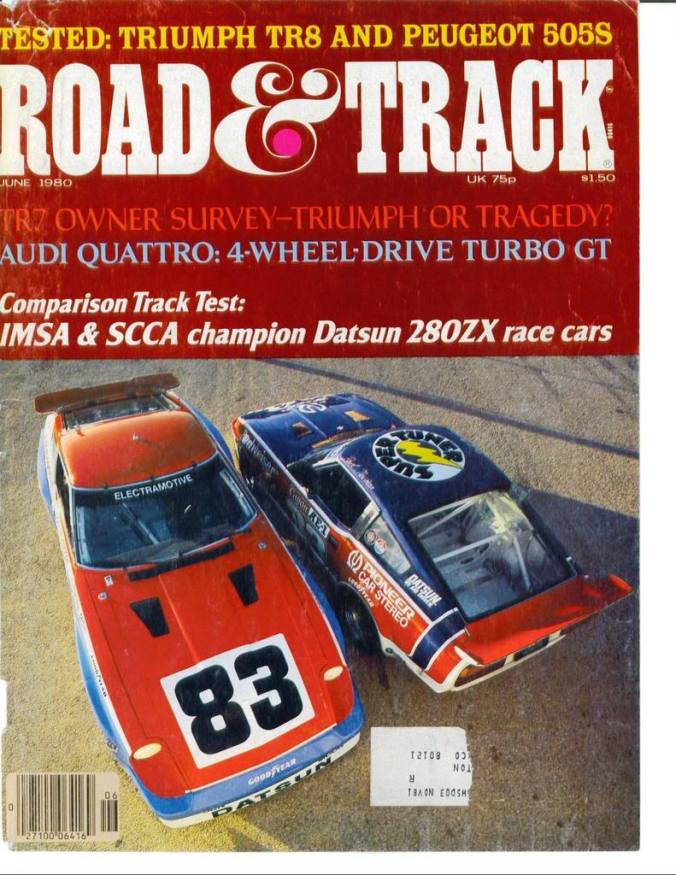 We all know the 280ZX’s real Achilles’ Heel: the rear suspension. Much to the chagrin of the sports-car crowd, Nissan sacrificed cornering ability for comfort and economic reasons (one of the main non-socio-political reasons for sports-car castration), by applying the semi-independent trailing arm design of the Nissan Bluebird/Datsun 810 (read: passenger cars), among other things. The upside of things is that the 280ZX came with disc brakes all around, so it wasn’t all bad.
We all know the 280ZX’s real Achilles’ Heel: the rear suspension. Much to the chagrin of the sports-car crowd, Nissan sacrificed cornering ability for comfort and economic reasons (one of the main non-socio-political reasons for sports-car castration), by applying the semi-independent trailing arm design of the Nissan Bluebird/Datsun 810 (read: passenger cars), among other things. The upside of things is that the 280ZX came with disc brakes all around, so it wasn’t all bad.
But why were semi-trailing arms bad for the 280ZX? The Nov. 1978 issue of Car and Driver explain why with their naturally-aspirated test car(s) and how it reacts:
“Semi trailing arms have a great deal more camber and toe change than MacPherson struts and therefore a greater potential for tricky handling. […] By nature, the car understeers. Under power, it will widen the radius in direct proportion to how far the driver has opened the throttle. But getting into turns is the tricky part. Any driver input that changes pitch attitude of the car -putting on the brakes, getting off the brakes, letting off the power- encourages the rear to come unstuck. Probably what’s happening here is that the change in the height of the rear suspension produces a corresponding change in the camber and toe of the rear wheels. When the back end goes up, the rear wheels toe out and move positive in camber. […] The ZX feels very rubbery at all times, and even experienced drivers can find themselves sideways in speeds that should be well below the cornering limits.”
What perplexed many was the way the early Turbo models’ suspension settings. In the May 1981 issue of Road & Track, the guys explored this in detail as the wall of text below can attest:
“On the ZX it turns out that controlling rear lift via shock absorber rebound control is much more critical to reduce brake dive than limiting drove via additional front jounce control. This approach also has the added advantage of not hurting ride. […] The key element in the flatter cornering and quantum improvement in transient response is the use of stiffer rubber bushings in the rear suspension. These accomplish several things: They increase the life of the rear suspension, which is subjected to higher loads because of the added power from the turbo; they help control squat during acceleration; and most importantly they reduce deflection steer, those unsettling loadings and unloadings of the rear suspension that prevent the driver from sensing what the rear end is doing when cornering. […]”
Seems legit. Still, early 280ZXs were a bear to corner with. Motor Trend’s May 1981 early Turbo model test breaks it down. Since there’s no pic or vid illustrating the phenomenon that takes place, yet another quote is in order:
“A quick turn of the steering wheel produces a two-phase turn of the car: the front end changes direction as you’d expect; then a moment later, as roll sets into the chassis, the rear wheels tighten the arc even more. It’s a phenomenon called transient-roll oversteer, common to semi-trailing-arm rear suspensions, that puts the kink in the Turbo’s otherwise linear handling.”
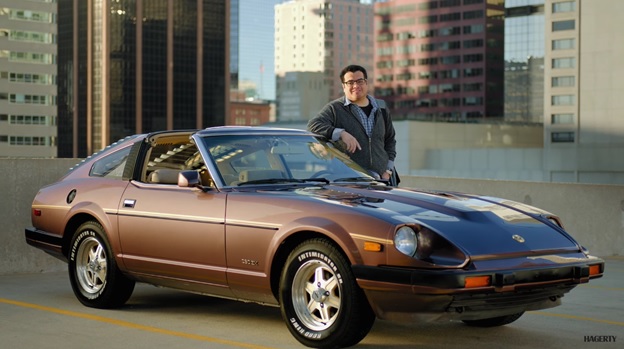 My jaw dropped when Hagerty -of collector car insurance fame- included the 280ZX for their commercial.
My jaw dropped when Hagerty -of collector car insurance fame- included the 280ZX for their commercial.
As mentioned, post-facelift “Series II” models got revised suspension geometry. This included settings… which became the same (read: soft) throughout the entire ZX-range for 1983, regardless if it was Turbo or not, according to Hemming’s Sports & Exotic Car Magazine (June 2010). That also goes to the nifty NACA air-duct as well from ’82-forward, so if you see a 280ZX with it, do your homework before assuming it’s a Turbo.
Yes, overall performance #’s of early, non-turbo ZXs suffered in comparison with the 240Z, in part by Nissan’s quest for MPGs, but who wasn’t doing that at that time? Besides, a little tuning can go a long way…
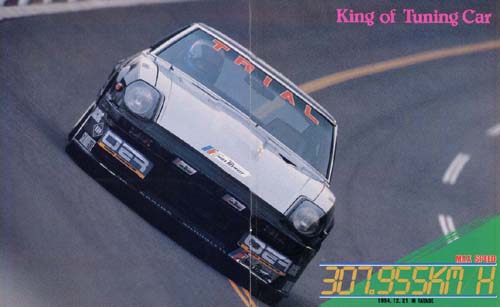
In order for people to open their eyes on the potential on this generation, I had to turn to the country that looked at these things and quickly adopted them as performance machines (author’s opinion. EDIT: While these machines got tuned, even their factory brochures showcased them with automatic transmissions and GT vibes, as pointed out by JapaneseNostalgicCar.com).
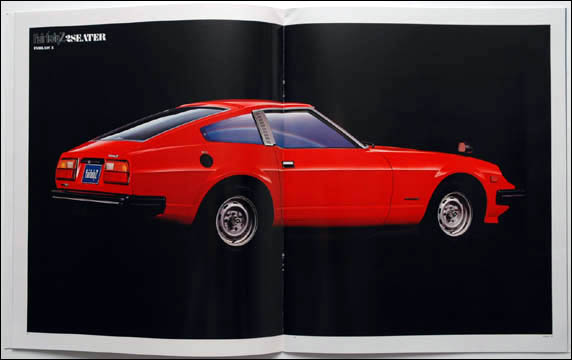 Domestic market S130: The Nissan Fairlady Z two-seater.
Domestic market S130: The Nissan Fairlady Z two-seater.
Ignoring the headache-inducing model line-up numbers, if you lived in Japan and wanted a Z (not ZX over there), but didn’t want to pay the taxes for the L28E 2.8L version (not to be confused with the simpler L28, which didn’t appear in Zs, but was a popular swap with tuners. In fact, a certain demonic S30 Z has an L28 block for its insane powerplant befitting an insane car, but that’s a story, and quite possibly a post, for another day…), you got the 2.0L L20E. If you were truly serious on performance, you skipped it (and the later introduced turbocharged version, L20ET) and went L28E.
Americans got the L28E with the 280Z, Japan got it for their market with the chassis-code S130. It came to be known that these engines were capable of withstanding abuse, and tuners quickly took advantage of the engine’s ruggedness to aim for the stars, specifically the 300km/h barrier. Also, if it’s good enough for the Dome Zero, it was definitely good enough for the S130. You can readily find info on these babies in a bunch of sites. And let’s not forget the turbo version, the L28ET…
Road-testers around the world agreed that the S130 got up to and cruised effortlessly at above-legal speeds, a trait not lost to the Japanese. The S130 was perfect for the hashiriya (Japanese street racers) that were into kōsoku (highway/expressway racing) during the ‘80s-to-‘90s, the golden era of Japanese street racing. An S130 reached notoriety when it became one of the most recognized cars of Japan’s most notorious street racing organization, the Mid Night Club. 300 kph+/190 mph+-capable aero tricks (too many to mention here), and 600HP, this 1978 model is a legend that has seen it all (including Vegas!). At least one guy was inspired by it and seems to have the right idea when he gets around to modding his 280ZX. And yes, you can still get that ABR Hosoki Engineering body kit.

We can’t deny the S130’s role in pop-culture. It’s due to pop-culture why I dig these machines, specifically with a certain transforming robot series. I used to have a paper folder with the art of 2 robots. One of them was this guy:
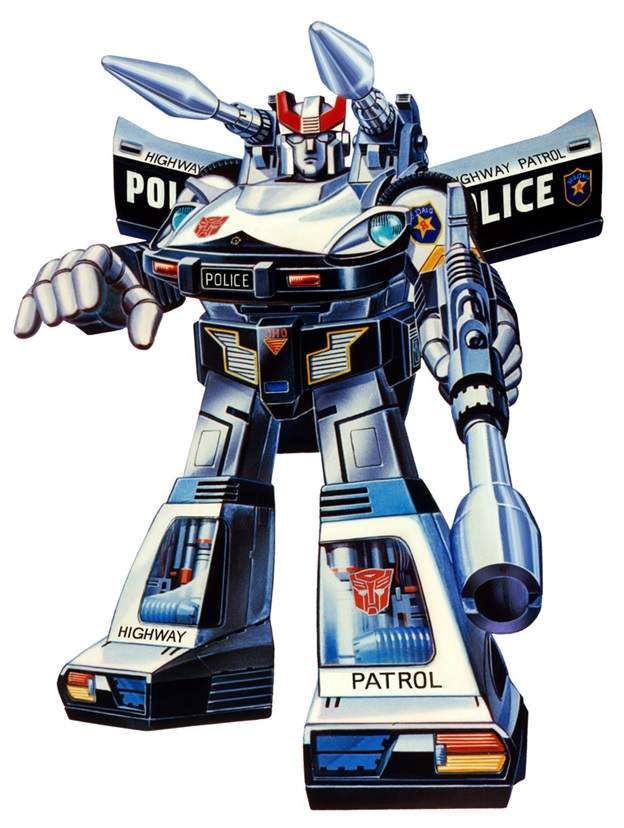
The combination of sporty-car looks and police livery, not to mention the cool robot design, was a hit with not only me, but with many kids around the world. The details were clear enough to track ‘em to the 280ZX, Series II to be specific. Depending on the country, kids were playing with a variation of these guys. Maybe even with the competition.
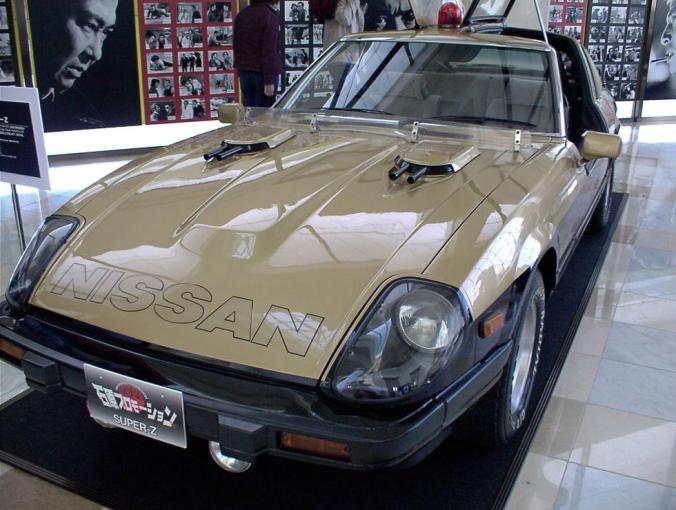 Speaking of pop-culture and police liveries, the heavily-laden-with-Nissans police-and-detective drama TV show Seibu Keisatsu showed a souped-up S130, called the Super Z, a wild crime-fighting machine complete with gullwing-like T-tops, in-board computers, smoke-screen device and grenade gun! The series did wonders for C210 Nissan Skyline 2000GT sales, so the Super Z must’ve made an impression all on its own. The car did inspire what seems to be a faithful replica. It, and basically the entire automotive cast deserves their own posts, but unfortunately all episodes that haven’t been removed from Youtube are in subtitle-less Japanese, so getting detailed info about said vehicles and their crime-fighting exploits will be seriously time-consuming. But who knows? Perhaps in a none-too-distant future.
Speaking of pop-culture and police liveries, the heavily-laden-with-Nissans police-and-detective drama TV show Seibu Keisatsu showed a souped-up S130, called the Super Z, a wild crime-fighting machine complete with gullwing-like T-tops, in-board computers, smoke-screen device and grenade gun! The series did wonders for C210 Nissan Skyline 2000GT sales, so the Super Z must’ve made an impression all on its own. The car did inspire what seems to be a faithful replica. It, and basically the entire automotive cast deserves their own posts, but unfortunately all episodes that haven’t been removed from Youtube are in subtitle-less Japanese, so getting detailed info about said vehicles and their crime-fighting exploits will be seriously time-consuming. But who knows? Perhaps in a none-too-distant future.
Staying on the “1980s icons” theme, Knight Rider was supposed to feature a modified 280ZX (yes, you read right. I did not make that up. When you first heard about this, how did it make you feel? Personally, I was blown away!). Of course, this was before the 3rd-gen Firebird came along. I wonder, if the show gave the go-ahead with Datsuns, would they change to 300ZXs when they became available (if so, I can just picture the episode in which the previous gen gets spectacularly written off and replaced with the new model with the old car’s CPU that miraculously survived)? Would the voice be that of a woman, like the one found on factory voice warning system on 1982-83 ZXs? Would Knight Rider special editions be made, unlike Pontiac? By the way, don’t bother looking for pics on said 280ZX (or else I’d used them!), you’ll only find the japanesenostalgiccar.com article and a ZX dolled up as KITT.
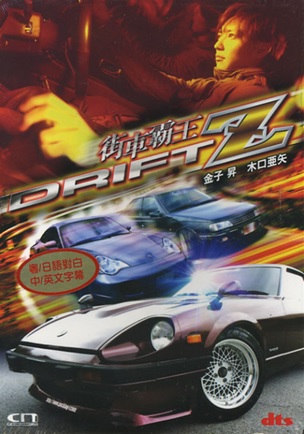
A movie which co-stars a S130 Fairlady Z (and a drifting Peugeot as the antagonist’s ride!), called Drift Z is available at a certain internet giant’s webpage… as soon as they re-stock (hint, hint!). Hope it doesn’t suck… But if it does, the S130 will still be remembered in Japanese cinematography as the antagonist’s record-breaking ride in the iconic street-racing movie Shuto Kôsoku Trial, aka Freeway Speedway.
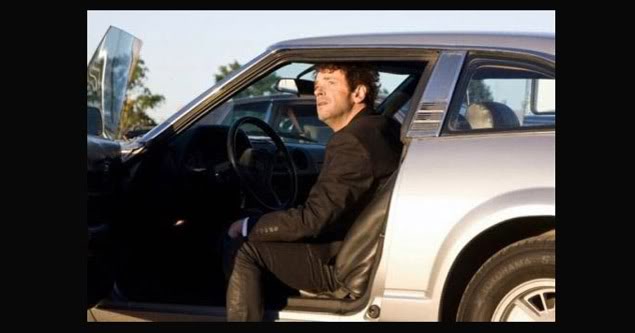
In Latin America, beloved music icon, the late Gustavo Cerati drives a 1979 280ZX 2+2 in 2 of a series of trippy road-movie-esque music videos in where the ZX feels more at home: the open highway.
I hope this little post makes people realize that there’s more to 280ZX’s than meets the eye. Japan and the UK didn’t get the L28ET, and European sales pale in comparison to the U.S. which got the lion’s share of ‘em, ripe for the picking. These cars are no longer new (duh) so it won’t cost serious coin to add an aftermarket turbo and some tunable suspension to one like it would when they were new. There are plenty of folks that love these things, so parts and advice can be found.
 I just don’t want the automotive equivalent of a “Don’t Know What You Got Till It’s Gone”. I would much rather have you ride in to the Z Zone (cue Kenny Loggin’s Danger Zone from Top Gun). Seems like an awesome place to be. So check ‘em out before they all get turned into LeMons racers.
I just don’t want the automotive equivalent of a “Don’t Know What You Got Till It’s Gone”. I would much rather have you ride in to the Z Zone (cue Kenny Loggin’s Danger Zone from Top Gun). Seems like an awesome place to be. So check ‘em out before they all get turned into LeMons racers.
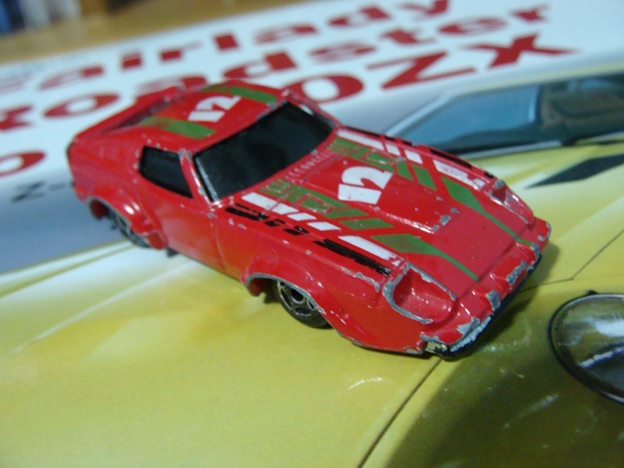
If you still don’t like 280ZX’s take it up with this guy.
–Tigerstrypes
References:
Edited blue 1981 Datsun 280ZX 2+2 pic: Flickr @ sv1ambo
280ZX racecars pic link: http://www.atarimania.com
Club Argentino de Pilotos pic (another weblink for the heck of it here): Facebook
Spectra 280ZX convertible pic, Road & Track cover Gustavo Cerati and TRIAL-tuned 280ZX: Photobucket
Activision 280ZX ad: http://www.xenons130.com
Hagerty 280ZX: printscreen
Nissan Fairlady Z 2-seater (the red one) pic link: http://www.mclellansautomotive.com
Drift Z movie: http://www.dvdasian.com
‘G1′ Transformers’ Prowl art: http://www.swivelarms.com
Seibu Keisatsu Super Z: http://pds.exblog.jp
Mid Night S130 Z: http://www.rhdjapan.com
Z Zone: http://www.japanesenostalgiccar.com
Toy 280ZX (Summer/SM brand) pic is mine.
Wanna know what the automotive press thought of the 280ZX when new and its racing program? Check out the following link and start browsing (it even has a Spectra convertible piece!):
http://s198.photobucket.com/albums/aa166/johnhaag1/
I had a lot of exposure to these when l first started working at Nissan Motor Manufacturing Corp. USA in the early 1980s. They were fun luxury/sports cars, but felt heavy and bulky.
LikeLike
Pingback: The Cars of Wangan Midnight manga: | It Rolls.
Pingback: 1984-1989 Nissan 300ZX/Fairlady Z (Z31) | It Rolls.
Pingback: The Knight Industries Two Thousand – K.I.T.T.- Behind the scanner | It Rolls.